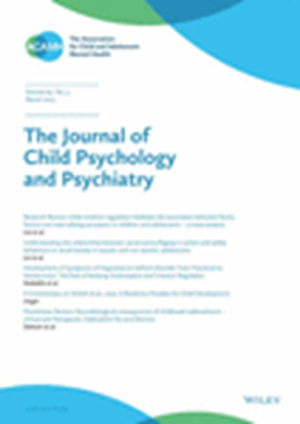Social connection and its prospective association with adolescent internalising and externalising symptoms: an exploratory cross-country study using retrospective harmonisation
Abstract
Background
Social connection factors play a key role for young people's mental health. It is important to understand how their influence may vary across contexts. We investigated structural (e.g. household size), functional (e.g. social support) and quality (e.g. feeling close) social connection factors in relation to adolescent internalising and externalising symptoms, comparing two countries Brazil and the United Kingdom (UK).
Methods
We pooled data from the UK Millennium Cohort Study (MCS) and the Brazilian High Risk Cohort Study (BHRCS). We included 12 social connection variables, identified through retrospective harmonisation and lived experience expert involvement. We tested measurement invariance and conducted multiple regressions to analyse associations between the social connection factors (age 14) and later internalising and externalising difficulties (age 17.5) in both cohorts. We investigated country-level interactions and used weights to account for attrition, survey design, population representativeness and sample size.
Results
We found pooled main associations with later internalising symptoms for ‘living with half-siblings’ (p < .001), ‘moving address’ (p = .001), ‘mother marital status’ (p < .001–.003), ‘bullying’ (p = .001), ‘being bullied’ (p < .001) and ‘difficulties keeping friends’ (p < .001). For externalising, we found main associations with ‘household size’ (p = .041), ‘moving address’ (p = .041), ‘mother's marital status’ (p = .001–.013), ‘bullying others’ (p < .001) and ‘being bullied’ (p < .001). Country-level interactions suggested higher internalising symptoms were associated with ‘household size’ (p = .001) in Brazil and ‘being bullied’ (p < .001) in MCS. Additionally, ‘half-siblings in household’ (p = .003), ‘poor mother–child relationship’ (p = .018), ‘single mother’ (p = .035), ‘bullying’ (p < .001) and ‘being bullied’ (p < .001) were more strongly linked to externalising difficulties in MCS.
Conclusions
Social connection factors, mostly structural, contributed to adolescent internalising and externalising difficulties in both countries. Factors relating to bullying and family composition seem to play a stronger role in each country. Cultural and socioeconomic factors might explain these differences. Future research should investigate cross-regional differences to meaningfully inform global mental health efforts.


 求助内容:
求助内容: 应助结果提醒方式:
应助结果提醒方式:


